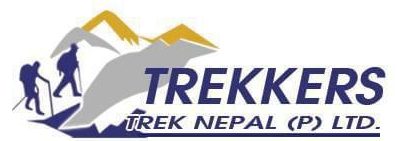Are you planning your first trek in Nepal but unsure where to begin? Nepal’s majestic mountains and diverse trekking routes offer experiences that cater to both seasoned trekkers and beginners. Whether you’re embarking on a short trek or a multi-day adventure, proper preparation can make all the difference. This beginner’s guide will help you get ready for your first trekking adventure in Nepal.
1. Choose the Right Trek for Your Fitness Level
Nepal offers a variety of trekking routes, ranging from easy walks to challenging high-altitude treks. As a beginner, it’s important to choose a trek that matches your fitness level and time frame.
Some beginner-friendly treks include:

- Ghorepani Poon Hill Trek (4–5 days): Famous for its panoramic views of the Annapurna and Dhaulagiri ranges, this trek is relatively short and offers comfortable accommodation.

- Langtang Trek 10 Days: A perfect trek for beginners & first-time trekkers! Explore scenic valleys, Tamang culture & stunning Himalayan views with expert guides, porters & cozy accommodations.

- Everest Panorama Trek 9 Days – A perfect trek for beginners! Enjoy breathtaking views of Everest, Ama Dablam & more without extreme altitude. Experience Sherpa culture, scenic trails & cozy teahouses with expert guides & porters.
Tip: If you’re unsure, consult a local trekking agency like Majestic Trails Nepal for advice on the best trek based on your fitness level and preferences.
2. Plan for the Best Trekking Season
Trekking in Nepal is best during the autumn (September to November) and spring (March to May) seasons. The weather is generally clear, offering great views and comfortable trekking conditions.
- Autumn: Clear skies, pleasant temperatures, and stable weather make autumn the most popular trekking season.
- Spring: In addition to great trekking weather, spring brings blooming rhododendron forests that add color and beauty to the trails.
While trekking is possible in winter and monsoon seasons, these times can present challenges like cold weather or rain, making the trails slippery or blocked.
3. Pack Wisely
Packing for a trek in Nepal requires a balance between bringing essentials and keeping your load light. Here’s a basic packing list for beginners:
- Clothing: Layered clothing is key for adjusting to changing temperatures. Bring moisture-wicking base layers, fleece jackets, and a windproof/waterproof outer layer.
- Footwear: Invest in a good pair of trekking boots that offer ankle support and are well-broken-in before your trip.
- Sleeping Bag: While teahouses provide blankets, it’s advisable to bring a sleeping bag, especially at higher altitudes where temperatures drop at night.
- Trekking Poles: These can be useful for stability on uneven terrain.
- Daypack: Carry essentials like water, snacks, sunscreen, and a first-aid kit in your daypack.
Tip: Most trekking gear is available for rent or purchase in Kathmandu and Pokhara, so you can pack light and buy what you need locally.
4. Acclimatize and Stay Safe
Altitude sickness is a real concern when trekking in Nepal, especially on higher-altitude treks like the Everest Base Camp or Annapurna Circuit. To avoid altitude sickness, follow these tips:
- Acclimatize properly: Ascend slowly, taking rest days to let your body adjust to the altitude.
- Stay hydrated: Drink plenty of water to keep hydrated and help your body cope with the altitude.
- Watch for symptoms: If you experience headaches, nausea, dizziness, or shortness of breath, descend to a lower altitude and rest.
Hiring a local guide or porter can also enhance safety, as they are experienced with the terrain and altitude and can offer support throughout the trek.
5. Know the Trekking Permits You’ll Need
Before starting your trek in Nepal, you’ll need to acquire the necessary permits. These include:
- TIMS (Trekkers’ Information Management System) Card: Required for all trekkers in Nepal.
- National Park Entry Permits: If your trek is within a conservation area, such as the Annapurna Conservation Area or Sagarmatha National Park (Everest region), you’ll need specific permits to enter.
Permits are available at the Nepal Tourism Board Office in Kathmandu or through your trekking agency.
6. Stay in Teahouses
One of the unique features of trekking in Nepal is the teahouse trekking experience. These small guesthouses along the trekking routes offer accommodation and meals, making it easier for trekkers to travel light. While teahouses are basic, they provide a warm place to rest and a chance to meet fellow trekkers.
Tip: In more popular trekking areas like the Everest and Annapurna regions, it’s advisable to book teahouse accommodation in advance, especially during peak trekking seasons.
7. Trek Responsibly: Leave No Trace
Nepal’s trekking regions are not only beautiful but also fragile ecosystems. To preserve these areas for future generations, it’s essential to trek responsibly:
- Carry reusable water bottles: Avoid buying plastic bottles along the trail. Instead, carry a water purification system or use boiled water available at teahouses.
- Take your trash with you: Dispose of any non-biodegradable waste in the cities after the trek.
- Respect local culture: When visiting monasteries or sacred sites, be respectful by removing your shoes and adhering to local customs.
Conclusion
Trekking in Nepal is an unforgettable experience that combines adventure, natural beauty, and cultural exploration. With the right preparation and mindset, even beginners can enjoy trekking through some of the world’s most breathtaking landscapes. At Majestic Trails Nepal, we offer guided treks tailored to your experience level, ensuring a safe and enjoyable journey. Contact us today to start planning your first trek in Nepal!




